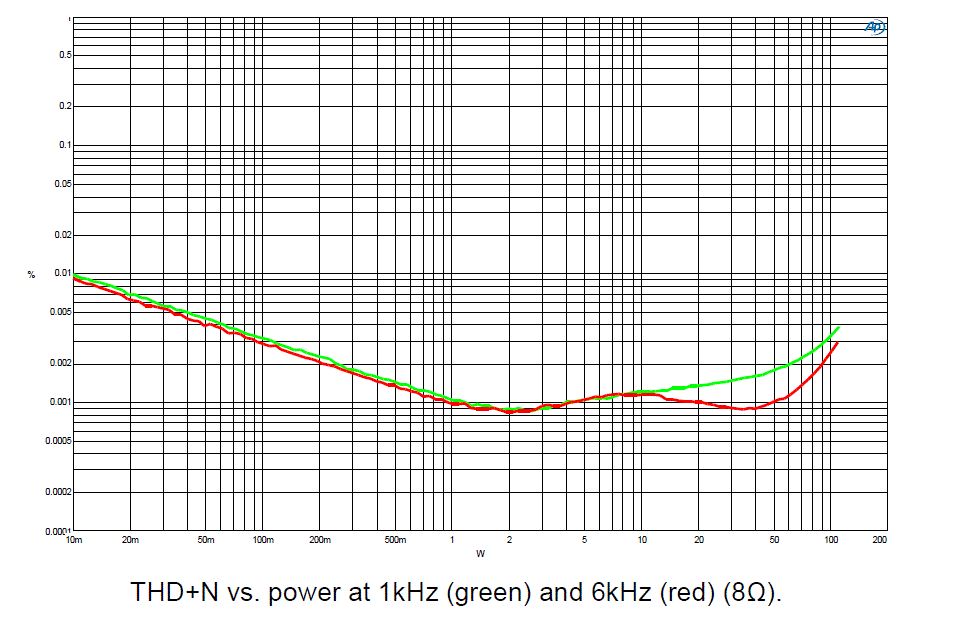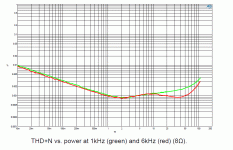But now, with high sensitivity tweeter and high gain, high power amplifier connected directly on it I have hissssss, which is very, very audible.
So the real solution is indeed less power and less gain, but you might want to test with a cheap L pad (two resistors).
But have to worn you all that I have very sensitive hearing, as I can hear changings in my setup, that I made via PC/DSP software and without even DSP connected to PC !!!
So I'm real audiophile !!!
I wish I could get $1 for each audiophile that claims that but then fails in a proper, controlled double-blind test.
An lpad will burn power, so that is only an option if you have power to spare (including for other drivers in the case of a plate amp with a shared power supply).Sure, it makes sense if you would have to attenuate anyway - but the attenuation (L-pad or transformer/autoformer) would reduce the noise/hiss just the same, so in that respect the higher impedance makes no difference.
Now regarding autoformer vs having a higher impedance driver to start with, the autoformer has a cost and will also bring some distortion of its own (albeit very low in this range).
With a 32 ohms compression driver (eg JBL D2430K or D2415K) you don't need any autoformer or lpad with a decent amp and gain matching.
Come one, that is in almost every hypex amp datasheet.I haven't seen any measurements of the Hypex amps showing THD as a function of load impedance.
Eg for the amplifier of interest in this discussion the nc100hf, page 10 :
https://www.hypex.nl/img/upload/doc/ncore_mp/nc100hf/Documentation/NC100HF_03xx.pdf
6dB of distortion reduction when going from 4 to 8 ohms (and of course 3db of noise reduction)
I'd rather put the heat into resistors than the voice coil, but the difference must be small.Using a less sensitive tweeter would not be different than using a lpad, and you would be burning Watts.
If anyone in the UK wants to buy my Fusions, they have been used for testing and have pretty much remained in their boxes with only Wago connectors attached.
No problems, I just want to return to a simplier system that doesn’t require any knowledge to operate, and something with a volume knob and easy source switching.
I have 2 of the FA122’s with remote sensor. 20% off new prices?
Dm me if your interested to not fill the thread with irrelevant info.
No problems, I just want to return to a simplier system that doesn’t require any knowledge to operate, and something with a volume knob and easy source switching.
I have 2 of the FA122’s with remote sensor. 20% off new prices?
Dm me if your interested to not fill the thread with irrelevant info.
Come one, that is in almost every hypex amp datasheet.
They indeed show THD/N at 4 Ω and 8 Ω, but not THD as a function of load impedance. It is possible that THD ges up again at 16 Ω as the amplifier runs out of voltage swing.
That's only the half of the story.....
Power levels in high frequencies are low and much lower with high efficiency drivers. The problem is that amps tend to have higher distortion at low levels. Hypex does provide the data:

In a loudspeaker with a passive crossover padding down a high efficiency driver keeps the amp in "normal" operating range. If you do this padding in the dsp tends to operating levels with higher distortion levels!
Power levels in high frequencies are low and much lower with high efficiency drivers. The problem is that amps tend to have higher distortion at low levels. Hypex does provide the data:
In a loudspeaker with a passive crossover padding down a high efficiency driver keeps the amp in "normal" operating range. If you do this padding in the dsp tends to operating levels with higher distortion levels!
Attachments
An lpad will burn power, so that is only an option if you have power to spare
With high sensitive tweeters l-pad may reduce harmonic distortion. Most amps have lower distortion at 2W than at 0.3W. With an l-pad you will effectively make the amp produce more power and this reduce amp-related distortion.
Oops seems to say the same as the post above. Sorry.
They indeed show THD/N at 4 Ω and 8 Ω, but not THD as a function of load impedance. It is possible that THD ges up again at 16 Ω as the amplifier runs out of voltage swing.
Max power goes down, and distortion climbs when it is reached (be it voltage or current limited), but within this limit a higher load always result in lower distortion from an amp.
Look at headphone amps for example, which are often tested with loads ranging from 8 or 16 ohms to 300 or even 600 ohms. Distortion always goes down with impedance.
And the myth that damping factor has any positive effect on sound quality should fall like old walls. Resistive padding should be done as soon as midrange and tweeter has substantially higher dB/V sensitivity than bass driver. Amplifier will swing happily with the voltage and digital output of DSP/DAC will provide as much bits of audio resolution and SNR as possible. Midranges with semi inductances in motors can benefit from series resistance in terms of linearity.
The problem is that amps tend to have higher distortion at low levels.
That is not distortion, that is plain uncorrelated noise.
Distortion always goes down with impedance.
For headphones maybe.
Max power goes down, and distortion climbs when it is reached (be it voltage or current limited), but within this limit a higher load always result in lower distortion from an amp.
That is my point - with a higher impedance load you hit the voltage limit sooner, so you won't stay within that limit.
And the myth that damping factor has any positive effect on sound quality should fall like old walls.
It is not totally a myth. Woofers (with high cone mass) benefit of reasonable amounts of damping factor, but beyond 20 or so it doesn't matter.
Amps are amps. What is interesting with headphone amplifier is the range of impedance they typically have to drive, and the measurements that follow.For headphones maybe.
But I might be biased as I do use a pair of THX 789 headphone amps to drive my compression drivers
Well of course, you loose 3dB each time you double the impedance once current is not the limiting factor.That is my point - with a higher impedance load you hit the voltage limit sooner, so you won't stay within that limit.
That is all a matter of proper sensitivity matching between the drivers and amps at hand.
Amps are amps
Not all amps work under the same constraints. Headphone amps are usually not voltage limited unless running from a small, low voltage battery.
They are voltage limited once the impedance reach a certain value, like any amp.Not all amps work under the same constraints. Headphone amps are usually not voltage limited unless running from a small, low voltage battery.
Most desktop headphone amp cannot output the same power in a 600 ohm load than in a 100 ohm load for example.
And of course most headphone amps out there are mobile amps running from a phone battery, and are very much voltage limited
Yet, they still have less distortion with high loads.
And of course most headphone amps out there are mobile amps running from a phone battery, and are very much voltage limited
Yet, they still have less distortion with high loads.
Voltage limitation means they clip, and distortion becomes very high.
Im working through this and it helps me but still need info on using a mike to measure speaker response using the Hypex software. Most seem to use REW.
I have corrected my error, in ignorance of the Hypex software/system requirements, of purchasing a Scarlet 2i2, now sold. I have bought the recommended Berhinger UMC22 and a Berhinger ECM 8000 mike. Hopefully a futher step towards purchasing a fusion.
I am a little surprised to find that no one has commented on the environment used to set up an active system. From my reading I find one has to use " Free Space " or an appropriate echo free chamber. To this end it means I have to use my speaker in my Garden with it as far above ground level as possible.
How have all who are using Fusion amps completed their final speaker line up -- In their domestic listening rooms -- or am I missing something?
Advice gratefully appreciated.
If "gating" works correctly, would you need to worry about an anechoic environment?
In theory, all you need to do is measure the distance from speakers to microphone, calculate the time for sound to get from the speaker directly, then calculate the time for sound to go via the nearest reflective surface (the obvious ones being the floor below and the ceiling above) and then make the "gate" open just after one and close just before the other.
But I'm not sure how/whether you could do this with a swept signal, because it seems that you would need a period of silence after each sample (at a given frequency) to let echoes in the room die away before the next sample.
Is that how it's done? If not, how?
So what? Just like the nc400 for any load higher than 3 ohms or soVoltage limitation means they clip, and distortion becomes very high.
So what? Just like the nc400 for any load higher than 3 ohms or so
So proving you were wrong in claiming "Distortion always goes down with impedance".
- Home
- Amplifiers
- Class D
- The New Hypex Fusion Plate amps
